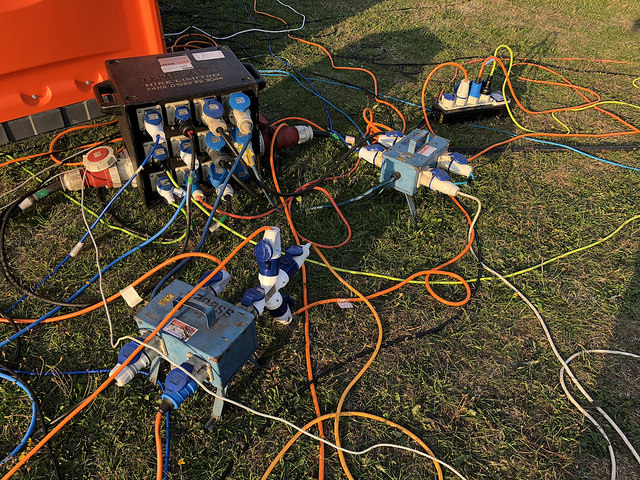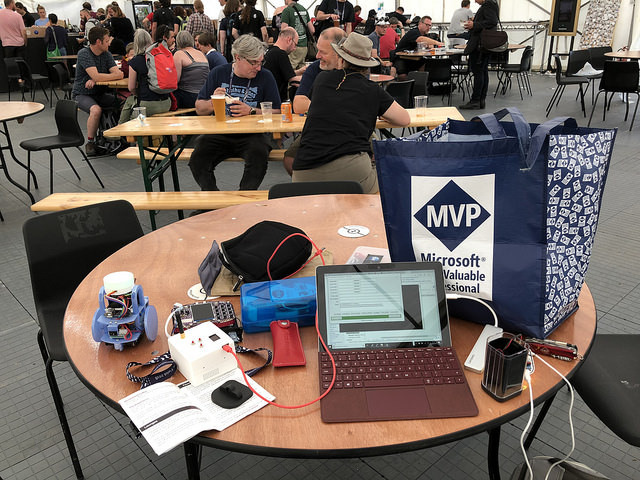The first session was the opening one, which brought home the complexity and difficulty of creating a very well-connected village in the middle of a field. Everybody in the emf organisation does it for the hell of it, and it seemed like this year the setup had been more hellish that usual, with failing tent suppliers, hillsides and all manner of other things turning up to cause hassle. Not that we’ve noticed much not working; the only real disappointment being that the badge; a very interesting piece of technology that we all get to play with, is not ready just yet.
Anyhoo, after the opening talk the session tracks started. The great thing about emf is that at any given time there are two or three sessions that look really interesting. The bad thing about emf is that at any given time there are two or three sessions that look really interesting, and you can only go to one.
After a brief look at the Air Quality Sensor workshop being run by Southampton University (and someone else going “You’re Rob Miles aren’t you”) we caught a lecture on a tele-presence robot by Libby Miller. It was a great talk, emphasising the ease with which you can create a something that works well for remote interaction and guaranteeing a peak in sales of a certain Ikea lamp which was used as the basis of the device. I’d love to build one. The instructions are here if you fancy making one to: https://github.com/libbymiller/libbybot_eleven
After that, a change of pace with a session with the fascinating title “101 Hacks for Late Soviet Water Towers”. The presenter of this session certainly leads an interesting life, which involves buying a water tower in Latvia by mistake for five euros and then finding out that you can save your five pound membership fee of the British Water Tower Appreciation Society (http://bwtas.blogspot.com/) if you actually own a water tower. Which almost makes it a profitable option, assuming you want to join the society as cheaply as possible. The tower is very tall (higher than a Space Shuttle) and not likely to fall down any time soon, which is good. It needed a door to make it harder for people to climb to the top and fall off, and doesn’t actually hold water at the moment, but it all made for a very enjoyable story told in a very engaging way.
After a burger lunch (very nice) it was time for my namesake to talk about the dangers of Artificial Intelligence. If we make a device that is clever enough to be useful, will it also be clever enough to be dangerous? It was a timely talk, what with the rapid advances in the field and the tendency of humanity to rush into technology without thinking about the consequences.
Then it was time for some hard-core hardware, in the form of a very detailed description of the creation of silicon devices that contain more than just transistors. It turns out that we can put all kinds of sensors directly onto the silicon and even make them small enough to be swallowed and take pictures during their journey through our system.
Next came a description of algorithmic light displays. I've been doing these since my discovery of Neopixel technology and my wedding lights of many years ago. However, the speaker was operating in a slightly different league, with huge displays containing hundreds of lights. There was some very interesting content about gamma correction and the proper use of randomness. Very interesting.
By now my brain was pretty much full for the day, but there was just enough space to take in a description of the project that is recreating one of the first ever stored program computers, the EDSAC project.
After that it was dark, which made it a perfect for tying some Light Painting/Light Writing. Everyone else turned up with proper camera on huge tripods. I just had my tiny Sony camera and a table top tripod. However, after literally shaky start, when I fell over onto the grass after setting up the camera, I got some pictures that I'm not too unhappy with.




































